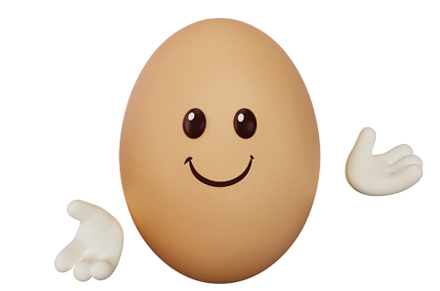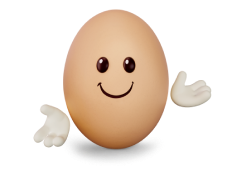USEFUL INFORMATION TO HELP YOU LEARN MORE ABOUT SUNNY QUEEN EGGS
MAKE THE MOST OF YOUR MERINGUE
- Egg whites must be room temperature, room temperature eggs whip faster than cold eggs
- Clean the bowl with white vinegar, this helps strengthen the egg white to build volume
- Whipping gradually from low to high, ensures the meringue mixture isn’t too airy & hard to shape
- Adding sugar in a stream, and only once it is at soft peak stage, this will help make a smoother final mixture
- Whipping on high after adding sugar will give you glossy, firm meringue without sugar grains
PERFECT POACHED EGGS
- Eggs must be fresh – they hold together better!
- Break egg into a small cup before adding into the water, this helps keep white together and surrounds the yolk
- Put a dash of vinegar in the water, this little trick helps keep your egg together during the cooking process
- Keep water at a simmer to achieve a delicious runny yolk at the end– don’t fast boil
- A slotted spoon & draining on kitchen paper drains off any excess water
Scrambled Egg
- Use a fork to whisk eggs, so they don’t get too frothy
- Add some water to the eggs, this makes for lighter, fluffy scrambled eggs
- Use oil & butter for best flavour
- Don’t cook too high, just use a gentle heat so they don’t dry out
- Don’t over stir, keep big folds
- Remove from heat just before fully cooked (it will keep cooking in the pan!)
Sunny Side UP Eggs
- Non-stick pan
- Only medium heat
- Cook the white mostly through
- Putting a lid on cooks the white through without burning the bottom & leaves the yolk sunny
Sunny Side UP Eggs
- Non-stick pan
- Only medium heat
- Cook the white mostly through
- Putting a lid on cooks the white through without burning the bottom & leaves the yolk sunny
Separating Eggs
To separate egg whites, always separate the egg over a small bowl then put the white into your mixing bowl. It is best not to separate eggs over your main mixing bowl. This is to prevent your egg whites being contaminated by yolk. Yolk contains fat which will spoil the stiff-peak effect of egg whites.
If you are separating eggs and do get yolk in the egg white, dampen the corner of a tea towel or hand towel and dip it into the bowl. The yolk will adhere to the dampness of the towel and you will be left with just the egg whites
Freezing Eggs
Egg whites can be easily frozen and thawed for future use. Freeze each egg white in an ice cube tray for easy measuring, and then transfer to either a freezer bag or container. Thawed whites will beat to a better volume if allowed to sit at room temperature for about 30 minutes.
Freezing egg yolks is not as easy as freezing egg whites as the gelatinous nature of the yolks causes them to thicken or gel when frozen. To help retard this, beat in either 1/2 teaspoon of salt (for savory) or 1 1/2 teaspoons of sugar (for desserts) per 1/4 cup of egg yolks (approximately 4 yolks).
Egg Size Guide
Using the correct sized eggs in recipes can sometimes mean the difference between success and failure. Eggs are graded according to egg weight, not egg size. Use our Sunny Queen Farms egg sizes guide to ensure your recipes are a success.


The Heggmaster
These bright round yolks are rich in choline, a vitamin B-like nutrient. Your brain uses choline to make acetylcholine, important for maintaining memory communication among brain cells. No wonder Sunny is full of interesting facts & figures, check them out below.
It is fabled that during the Spring Equinox you can stand an egg on its end.
Older hens will lay larger, but fewer, eggs.
Half an hour after laying, she will start the egg production process all over again.
Egg-laying chooks descended from the Asian red jungle fowl (gallus gallus spadiceus) and are thought to have been domesticated for at least 8-10 thousand years.
Hollow eggshells make great Easter decorations and miniature seed planter pots. You can also use them for compost or to control slugs.
Eggs are graded using a process called “candling” in which they are passed over a bright light to check for internal defects.
Hens are typically most productive in their first two years of life.
A young hen is called a pullet for its first year, or until it begins laying.
Hens are typically most productive in their first two years of life.
Hens are typically most productive in their first two years of life.

